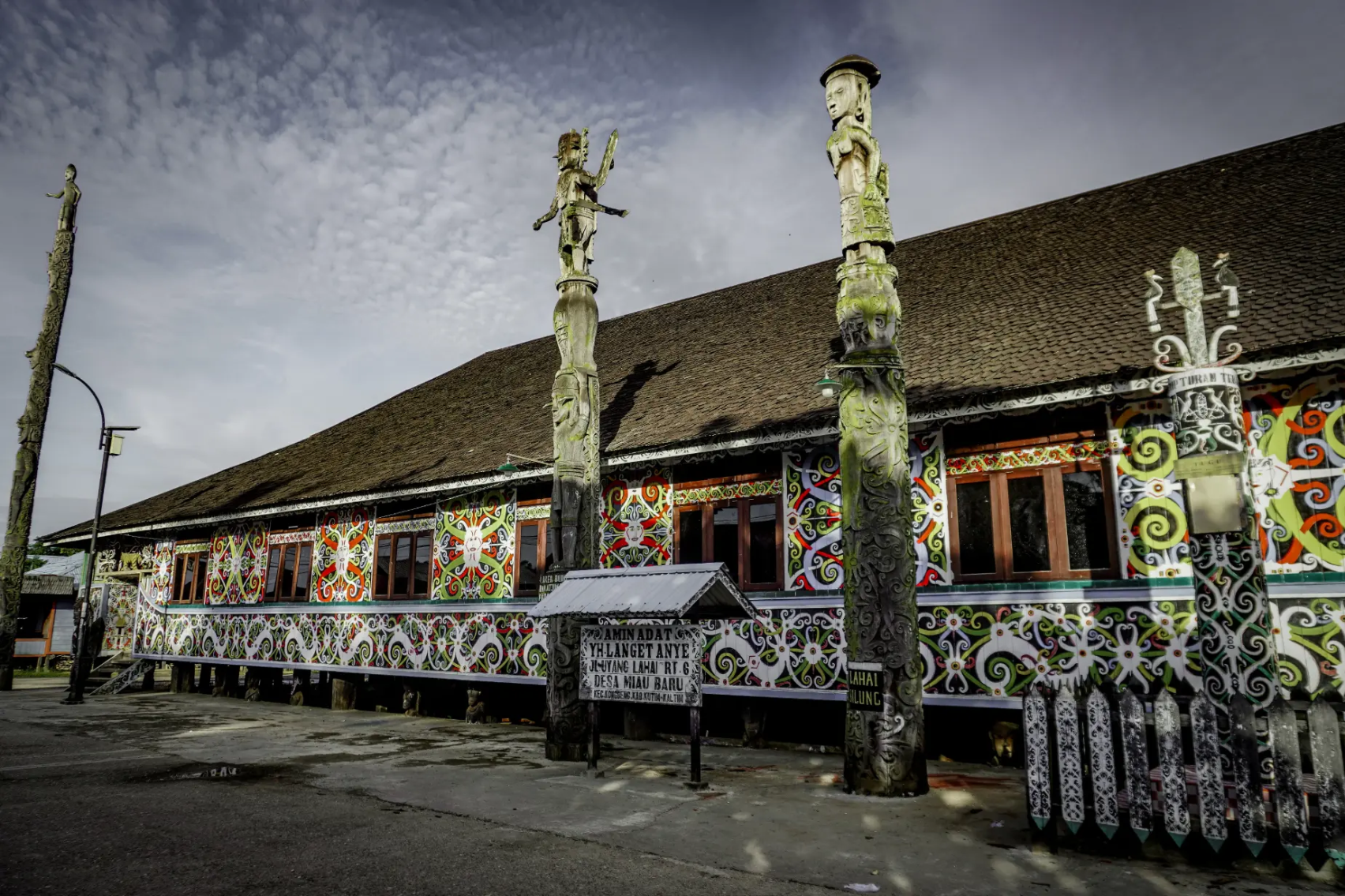Miau Baru: The Longhouse and Stories Carved in Wood Heart
 The Lamin Adat, or traditional longhouse, in Miau Baru is more than just architecture. It is a living symbol of Dayak Kenyah identity, values, and ancestral wisdom. This longhouse stands as the cultural and spiritual heart of the village, echoing with generations of stories, rituals, and communal life.
The Lamin Adat, or traditional longhouse, in Miau Baru is more than just architecture. It is a living symbol of Dayak Kenyah identity, values, and ancestral wisdom. This longhouse stands as the cultural and spiritual heart of the village, echoing with generations of stories, rituals, and communal life.Located in Kongbeng District, East Kutai, Miau Baru is one of the few villages where Dayak culture is not only preserved, but actively practiced. Here, tradition is not relegated to ceremony alone. It lives in everyday interactions, from the songs sung at dusk to the patterns carved in wood.
A Living Legacy
Built from durable local hardwoods such as ulin and bengkirai, the longhouse stands elevated, stretching across the village with its iconic sloped roof and wide wooden floors. Inside, the open-plan space encourages shared living a hallmark of Dayak communal values. It serves as a venue for celebrations, deliberations, and sacred rituals, fostering kinship and unity.
What makes the lamin especially remarkable is the intricate ornamentation carved into its beams, walls, and staircases. These carvings are far more than artistic expressions. They are visual scriptures. Motifs like the aso (a mythical dragon-dog guardian) and spiraling vines embody protection, growth, harmony, and the deep interconnectedness between humans, nature, and the spiritual realm.
The vibrant colors: red, black, white, and yellow, carry profound meanings: courage, mourning, purity, and the cycle of life. Each line and hue reflects not only aesthetics but also philosophy and prayer passed down through oral traditions. The lamin is a living text, etched in wood, waiting to be read by those who listen with heart.
Even today, the longhouse remains a space for learning and inspiration. Elders share ancient stories; children learn dances and songs; guests are welcomed not as tourists, but as part of the ongoing cultural dialogue. Sitting within its warm embrace, visitors don’t just observe Dayak life, they feel it.
The Journey
Reaching Miau Baru from Sangatta is a journey across landscapes and into tradition. The village lies approximately 130 to 150 kilometers east of Sangatta, accessible by land. The route passes through several regions, including Muara Wahau and Kongbeng, before reaching the village center.
The drive typically takes four to six hours, depending on road conditions and weather. While much of the road is paved, some sections near the village remain gravel or dirt, especially challenging during the rainy season. For this reason, a four-wheeled vehicle is highly recommended.
Travel Options:
Commercial Bus: Comfortable buses with reclining seats run this route, offering a convenient and budget-friendly option. Fares usually range between IDR 200,000 to 400,000. These buses follow scheduled routes and are suitable for those seeking ease without sacrificing comfort.
Private Car: For flexibility and freedom, hiring a private vehicle is ideal. It allows travelers to explore off-the-beaten-path areas, stop along the way, and adjust their pace. This option is especially helpful for families, small groups, or those carrying equipment.
Upon arrival in Miau Baru, the Lamin Adat is easy to spot, an elongated wooden structure adorned with traditional Dayak carvings and motifs. Located near the center of the village, it stands as a beacon of cultural continuity and community life.
For a safer and smoother journey, daytime travel is recommended, as lighting is limited in some rural stretches. Regardless of how you arrive, your trip to Miau Baru is more than a destination. It’s an invitation into the heart of Dayak heritage, where each step brings you closer to a story still being told.